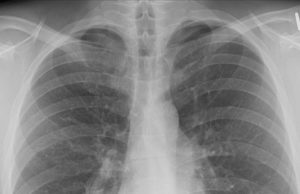Previously, the Finnish Medicines Agency (Fimea) classified nicotine pouches as medicinal products due to the pharmacological effects of nicotine. However, in April 2023, Fimea revised its interpretation, reclassifying nicotine pouches as consumer goods unless explicitly marketed for medicinal purposes. With this reclassification, nicotine pouches now fall under the Tobacco Act and Chemicals Act, enabling the government to impose tighter controls on their sale, marketing, and distribution.
To this effect, Finland is preparing to enforce a strict ban on flavoured nicotine pouches, allowing only menthol and mint flavours. The Finnish Ministry of Health proposed the revised legislation, which aims to tighten regulations on nicotine pouches amid rising concerns over youth access and public health. The bill proposes regulating nicotine pouches similarly to traditional tobacco products, in line with Finland’s ongoing efforts to reduce nicotine consumption.
The restrictive measures introduced in the proposed law include a ban on all flavoured nicotine pouches except menthol and mint and a maximum nicotine limit of 16.6mg/g per pouch. While the government will have increased authority to regulate packaging, this will need to be uniform and must carry health warnings in alignment with tobacco products. Moreover, sales to minors will be prohibited both online and in retail outlets.
Approved by parliament in October 2023, the initial version of the bill, allowed tea, ginger, rosemary, and wood flavoured pouches alongside menthol and mint. However, this proposal was scrapped following allegations that a local nicotine pouch manufacturer had leveraged government connections to favour its product lineup—being the only producer of the additional permitted flavours.
The aim and likely result of the bill
As a result of the controversy, Health Minister Sanni Grahn-Laasonen revised the proposal to limit permissible flavours to menthol and mint only, a decision aligned with her original recommendation. If passed, the law is expected to take effect by March 20, 2025. A six-month grace period will allow manufacturers and retailers to adjust nicotine content to meet the new limits, while packaging regulations will become mandatory within one year.
According to the Finnish government, the bill is designed to prevent youth use of nicotine pouches and curb illegal imports and black market trade, and therefore also combat organized crime linked to unregulated nicotine sales. However, tobacco harm reduction (THR) experts have consistently argued that such harsh restrictions tend to have the opposite than the desired effect, and real-world data have proven this in every case.
Moreover, data from neighbours Sweden and Norway, have clearly indicated that the opposite approach – incorporating the use of safer nicotine alternatives in local tobacco control strategies – is the most effective way to reduce local smoking rates.
Smoking rates in Sweden drop while snus gains popularity
In fact, a recent study published in BMJ Open highlights a significant shift in nicotine consumption trends in Sweden over the past few decades. Between 1986 and 2022, cigarette smoking saw a sharp decline, while the use of snus – the precurser to nowadays’ NPs – rose steeply. Smoking rates among men fell by 26.3 percentage points, while women experienced a decline of 20.6 percentage points. By 2022, only 4.9% of men and 9.7% of women were smokers.
Conversely, snus usage grew over the same period. Among men, usage increased by 7.3 percentage points, while women saw a more dramatic rise of 12.5 percentage points. By 2022, approximately one in 3.8 men and one in 7.7 women were using snus. While banned across the European Union since 1992, Sweden was granted an exemption when it joined the EU in 1995, allowing its continued sale and use within the country.
While Sweden is frequently hailed as a prime example of tobacco harm reduction (THR) for its low smoking rates driven by the promotion of safer nicotine products, neighboring Norway has witnessed a similar decline in cigarette consumption—largely attributed to the growing popularity of snus.
According to Statistics Norway, the country’s daily smoking rate among people aged 16-74 dropped to just 7% in 2023, with smoking becoming increasingly rare among younger generations. At the same time, daily snus use has surged, more than tripling from 2005 to 2023, reaching 16%. Among men aged 25-34, 34% reported using snus daily, while 23% of women in the same age group were regular users. By 2017, the number of daily snus users had already surpassed the number of smokers, reflecting the growing shift towards safer nicotine alternatives.
How to become Smoke-Free
In November 2024, Sweden achieved an important milestone by being very close to becoming the world’s first officially recognized “smoke-free” country, by being set to meet the World Health Organization’s threshold of under 5%, significantly ahead of the European Union’s timeline.
The Swedish government attributes this success to its harm-reduction strategy, which promotes safer nicotine alternatives such as snus and vaping over traditional cigarette smoking. While other European nations continue to struggle with higher smoking rates—averaging 24%—Sweden has demonstrated a dramatic contrast.
In contrast, if approved, Finland’s nicotine pouch flavour ban will mark one of the strictest regulatory frameworks in Europe. THR experts and advocates warn that such excessive restrictions could undermine smoking cessation efforts and push users towards more harmful products or the illicit market. The bill’s final approval is pending parliamentary approval, with implementation likely to begin in March 2025.













